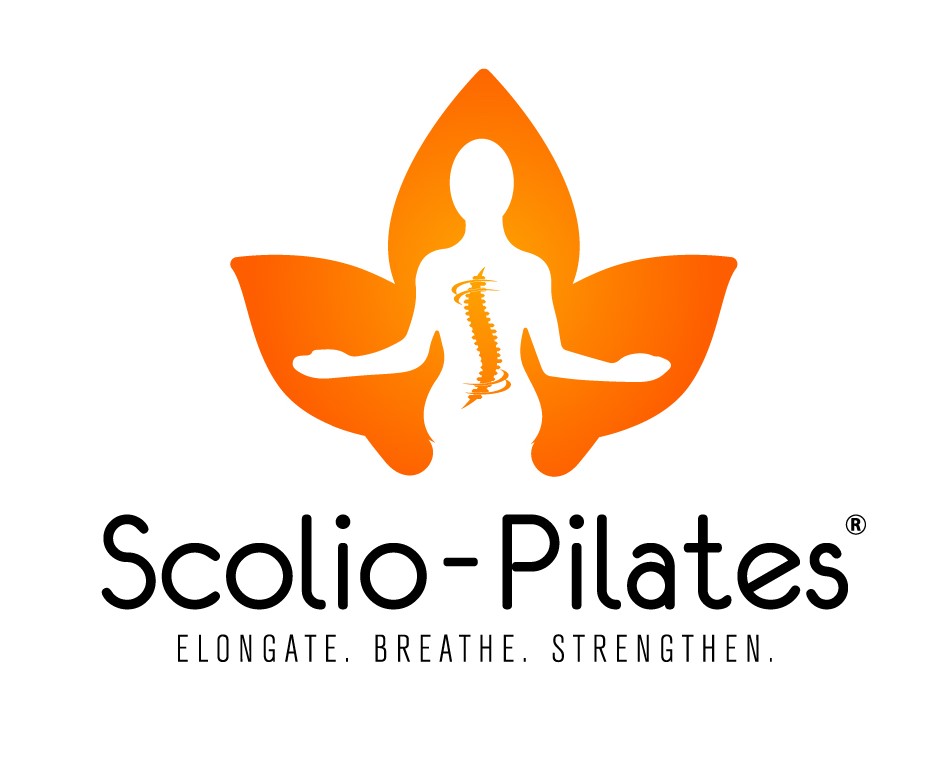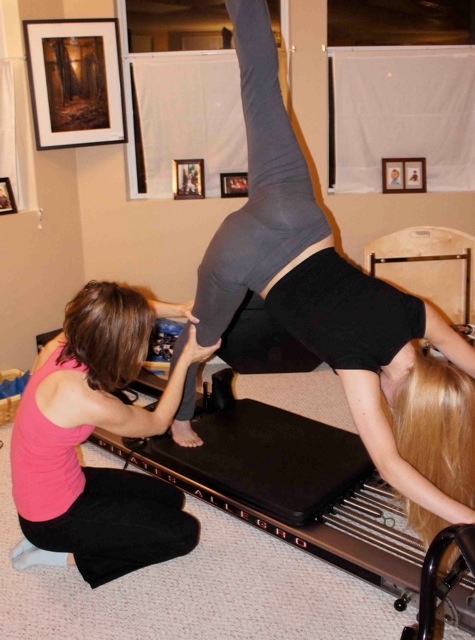I had a new client start recently: a professional ballet dancer complaining of pain on the inside of her right knee that was worse with jumping. She said that her doctor had diagnosed patellofemoral syndrome. Okay, so, as a Pilates Instructor what do I do with that information? Well, I can look it up and read about it but then after that I do what I do with all of my clients who come to me looking for exercises that can alleviate pain: I look for imbalances and muscle weaknesses. Pretty simple stuff.
So here is what we found:
- The right hip did not rotate as much as the left hip. In fact, I would guess that if she had not been dancing for years that her right knee would be knocked (valgus).
- Since that right hip is so good at internally rotating, it is tough to keep the hip (and therefore the knee) in a neutral position during stabilizing activities (think standing on the right leg while moving the left leg).
- Because of the internal rotation at the right hip, the vastus medialis (the bubble of muscle just above the and to the inside of the knee) muscle on the right knee is also pretty weak.
- The hamstrings: We tested the hamstrings in three directions: neutral, externally and internally rotated. It was the hamstring responsible for flexing the knee from an internally rotated position that was weak on the right knee.
Those were the primary imbalances and here is what we have been doing about it:
- Strengthening the vastus medialis with seated right knee flexion/extension from a seated position with the hip externally rotated. Focus on making the vastus muscles activate.
- Strengthening the external rotators with side-lying leg work with rotation (think Jane Fonda and all of those crazy leg exercises she used to do while lying on her side.
- And the most important: Working on training the right leg to stabilize in a neutral position.
We stabilized the knee in various exercises but in all exercises we are maintaining a neutral right leg in a parallel position. I am not allowing her to hyper-extend or internally rotate. Initially, she performed these exercises with my hands on her knee (see pic) where I could continually coax the knee back into position if it left. At the dance studio she performs all these same exercises (they have a Pilates reformer at the studio) and she has made incredibly fast progress in the ability of that leg to maintain neutral. The more the leg maintains stability the more strength she obtains.
It is astonishing how fast pain can be alleviated with proper bio-mechanics and some corrective strengthening. After one month this young dancer is pain free. BUT she does her homework!!

